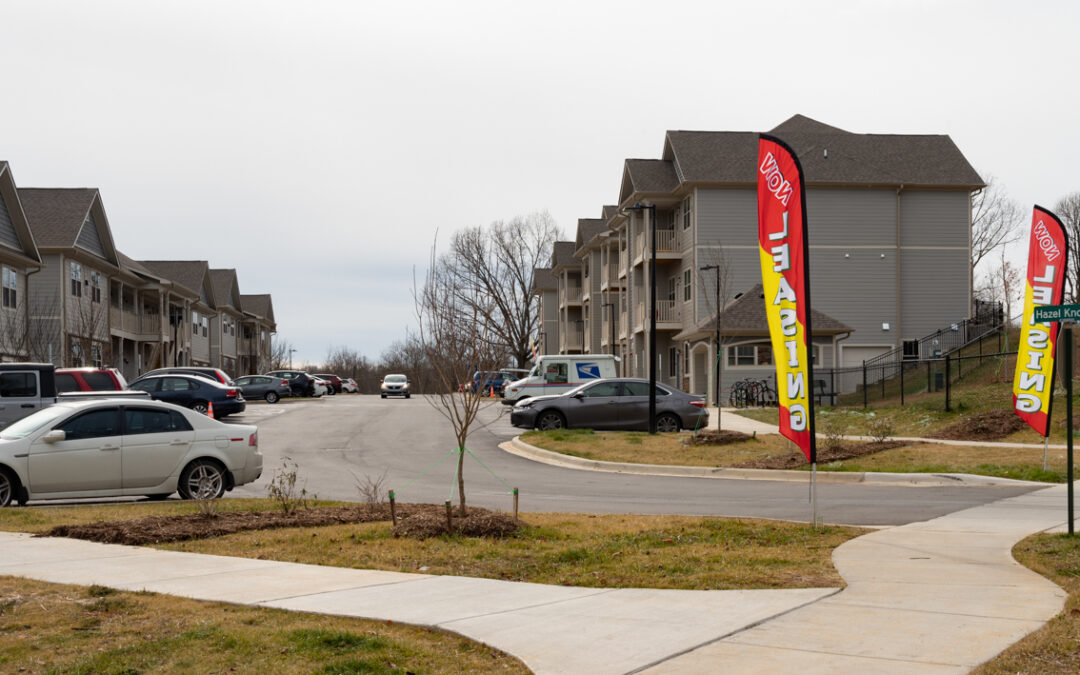
Rethinking Smart Growth. Reclaiming Community Design’s Radical Roots
Rethinking Smart Growth. Reclaiming Community Design’s Radical Roots
by Chris Joyell
About a year ago, I reached out to Andrea Golden and Rocio Alviter, community organizers with PODER Emma — a community group working to prevent displacement in the Emma neighborhood north of Patton Avenue in Buncombe County. PODER Emma was weighing the City of Asheville’s proposal to change the zoning of a large, defunct K-Mart lot on Patton that served as a gateway to their community. The City’s proposal would encourage dense development and result in more housing, retail space, and amenities on the edge of the Emma neighborhood. I contacted PODER Emma to see if they were interested in working with MountainTrue to advocate for more sidewalks, greenways and green space to connect the neighborhood to this new destination. Much to my surprise, they said no.
Most of Emma lies just outside the city line in Buncombe County. It’s a diverse neighborhood and well represented by Asheville’s Latinx community, as well as a sizable Croatian population and a Belarusian contingent. As the Director of the Asheville Design Center (ADC), I had engaged the community in 2009 when the I-26 Connector project was slated to plow through the neighborhood. While we were successful in creating a design that would spare the neighborhood from highway construction, a new threat to Emma began to arise — gentrification.
Addressing the forces that drive gentrification and racial and economic displacement should be central to the mission of Design Centers today, as they once were in the 1960s. Given their origins, Design Centers should not be neutral in the face of social injustice or the destruction of the environment.
Just across Patton Avenue, rents and real estate prices have skyrocketed in West Asheville over the past decade. What was once a modest residential community with a small commercial corridor is fast becoming a tonier neighborhood replete with luxury condos, boutiques, breweries and restaurants. As the real estate market in West Asheville tightens, developers have begun to investigate redevelopment opportunities in Emma.
For both hungry developers and cost-conscious first-time home buyers, Emma is ripe for investment. The neighborhood offers quick access to downtown and Asheville’s major transportation arteries, and land is relatively cheap with a mix of modest single-family homes and mobile home communities. Absent a massive downturn in Asheville’s housing market, it’s hard not to imagine Emma changing dramatically, and any of the numerous mobile home communities in Emma being displaced to make way for upscale housing in the next wave of development.
Certainly, the planned upgrade to the K-Mart site would invite more real estate speculation in Emma. Thus PODER Emma’s reluctance to embrace the City’s ambitious plans in the absence of policies to protect against the harmful effects of gentrification.
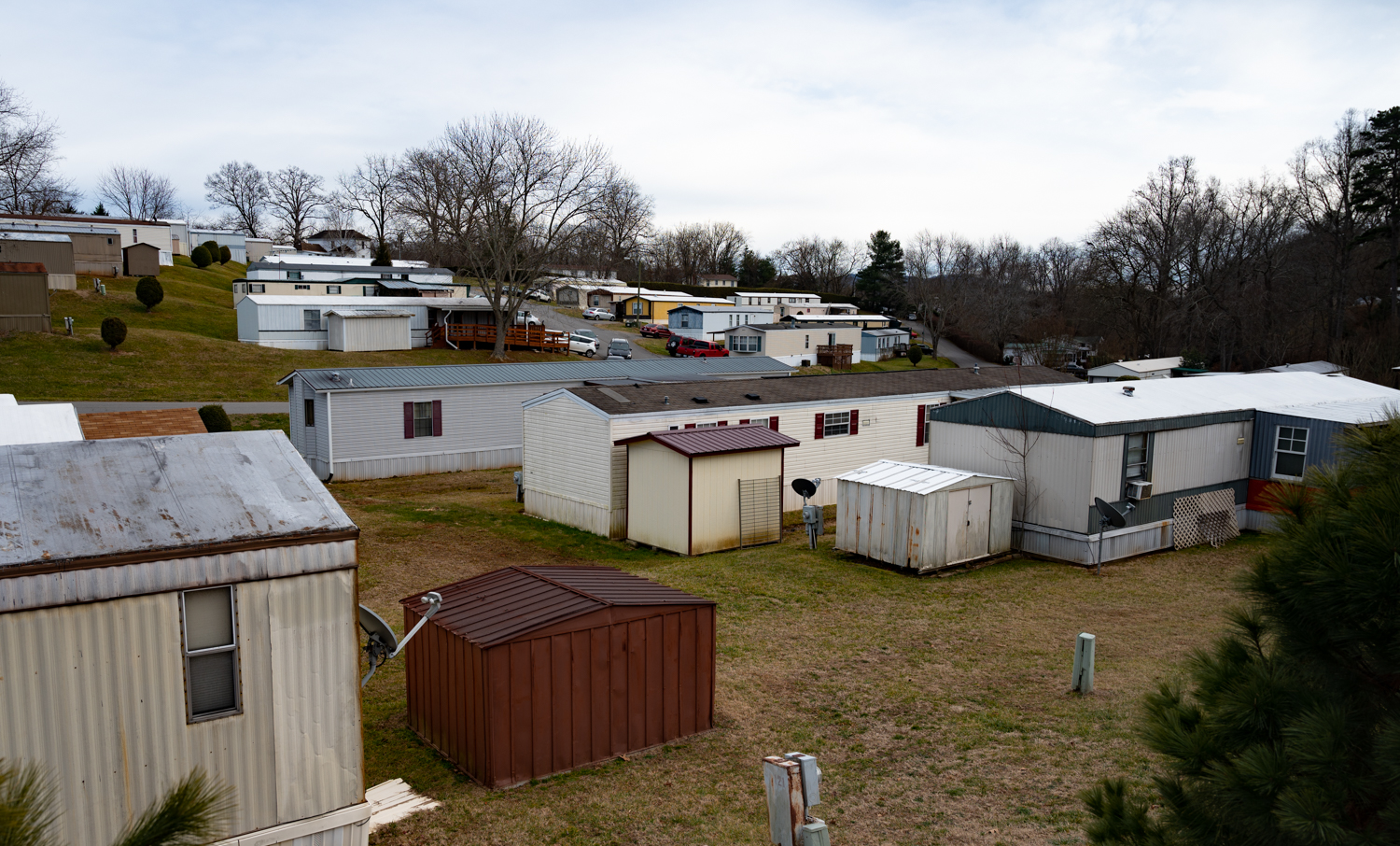
What are the responsibilities of Design Centers when it comes to gentrification?
Community Design Centers date back to the 1960s. They were a response to racial and economic injustice and a rejection of the top-down approach employed by urban planners, architects and bureaucrats during the first half of the twentieth century. Redlining and urban renewal had gutted poor, Black and immigrant neighborhoods and displaced their communities. And white flight had left behind vast tracts of urban sprawl.
Urban planners and architects of the modernist tradition had drawn up ambitious new blueprints for how cities would be organized and where massive new highways would be constructed with little concern, and sometimes with outright hostility, toward the people whose homes, businesses and churches stood in the way. It was a sterile approach that prioritized the visions of professionals over the needs and concerns of impacted communities.
Community Design Centers sought to flip this design process on its head to “offer design and planning services to enable the poor to define and implement their own planning goals.”1 This meant developing more democratic processes that put community involvement front and center, while also bridging the gap between the design of physical environments and the social and economic needs of the communities involved.
In this sense, addressing the forces that drive gentrification and racial and economic displacement should be central to the mission of Design Centers today, as they once were in the 1960s. Given their origins, Design Centers should not be neutral in the face of social injustice or the destruction of the environment.
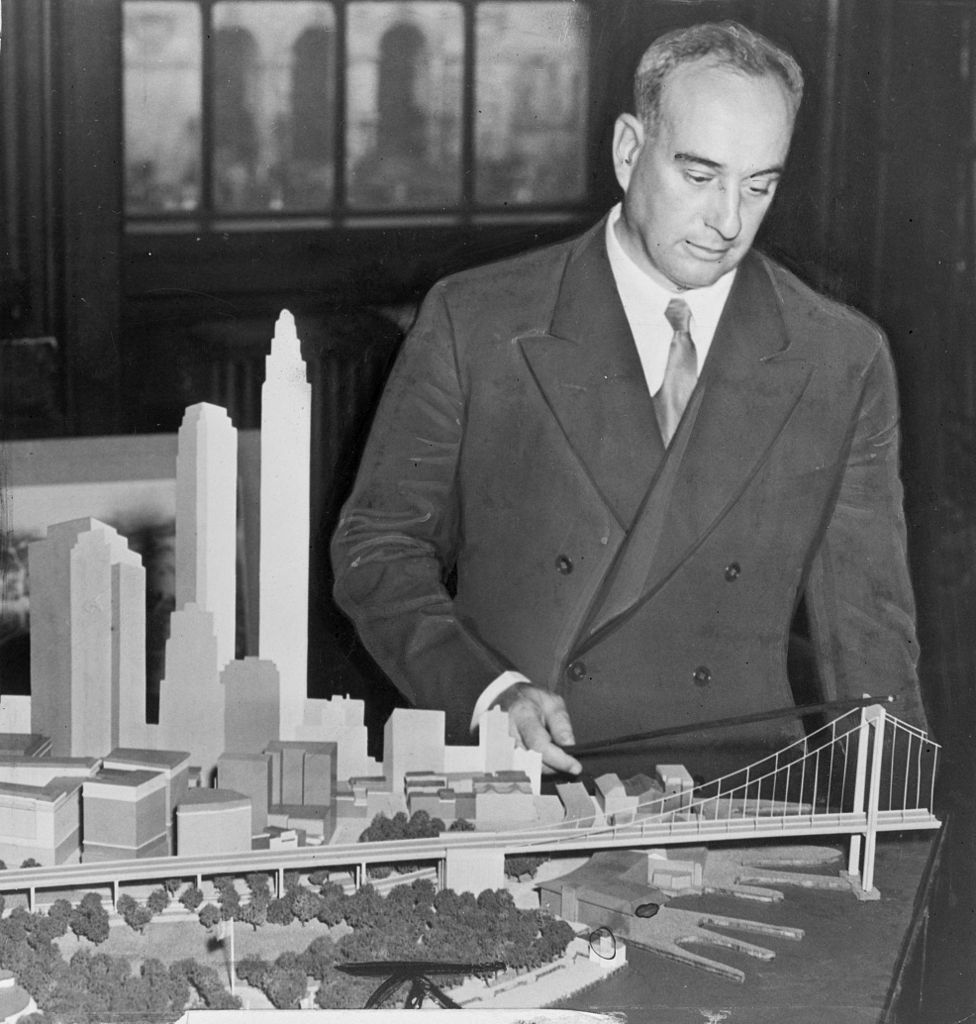
Robert Moses looks over a model of the Battery Bridge. From the 1930s to the 1950s, he changed shorelines, built roadways in the sky, and cleared out ethnic enclaves to make way for his grand designs. Unfortunately, his approach influenced a generation of engineers, architects, and urban planners who spread his philosophies to cities and towns across the nation.
Despite these origins, many centers have seen their roles in addressing social justice diminished as they have been pushed to respond to powerful local interests and watch while the community design process has been co-opted by the wealthy and influential. In the 1980s, design centers faced diminished funding, and many organizations made the pragmatic shift to fee-for-service contracts and direct service delivery. Over the past several decades, design centers have also felt pressure from all sides to narrow their mission. Grantors impose funding deadlines that demand immediate results, undermining the necessary and long-term work of building trust and gaining acceptance in historically disadvantaged communities. And affluent neighborhoods have learned to redirect the power of community-driven design to serve their own interests, participating with well-organized gusto in the community engagement process to thwart progressive projects and initiatives that design centers were originally intended to serve.
As a result, many design centers, including ADC, have adopted a project-oriented approach, where our focus is directed towards the built environment and less so on those inhabiting it. For the Asheville Design Center, that has translated into a mission of partnering with and assisting communities to create designs that adhere to a set of ten “Smart Growth” principles. These principles are intended to encourage walkable, compact neighborhoods connected to open space by a network of greenways, bike lanes and sidewalks — what’s not to love?
First, let’s interrogate the concept of “walkability.” Evidence suggests that living in a walkable neighborhood can lower transportation and healthcare costs and allow for a wider range of housing types. But that only tells one side of the story.
Walkability is also a prized metric within the real estate industry. A city’s walkability, according to Walk Score, is determined by analyzing how many errands can be done without a car, and cities with the highest scores (like Boston, New York and San Francisco) often come with an incredibly steep cost of living. In a survey of 14 US cities, the brokerage site Redfin found that a one-point rise in Walk Score adds nearly one percent to the price of a home. One recent study has also shown that homes within 600 feet of a greenway saw an increase in value of five percent.
Contrast the walk score for West Asheville center (86 – very walkable) to that of Emma (37 – car dependent). It is entirely foreseeable that once infrastructure improvements like sidewalks and greenways are installed in Emma, the neighborhood’s walk score would start to climb, along with housing prices and property taxes — displacing many renters and residents dependent on fixed incomes. Even some homeowners in Emma, especially those who rent the land beneath their mobile homes, are vulnerable to displacement and the whims of their landlords. In this context, the Emma community’s reluctance to welcome such improvements into the neighborhood is completely understandable.
At the Asheville Design Center, our design process has been very much grounded in the physical world. We typically begin with an examination of buildings, infrastructure, and open space. We directly engage residents to find out what works and what needs improvement. Our design solutions usually take the form of a physical structure or plan — an outdoor classroom, a neighborhood master plan — that addresses the problems identified by the community. We are very effective in addressing specific tangible problems in a neighborhood, but we struggle to tackle larger structural inequities.
Likewise, the application of Smart Growth principles is similarly constrained. Good designs are limited in what they can accomplish if a community’s underlying problems — poverty, income inequality, the legacy of redlining and urban renewal — remain unresolved. Worse, if applied uncritically, Smart Growth can direct capital into projects that set the stage for new, upscale development, rather than meeting the needs of neighbors. A new bike path or pocket park may sound appealing on its face, but can drive economic forces that lead to gentrification and displacement.
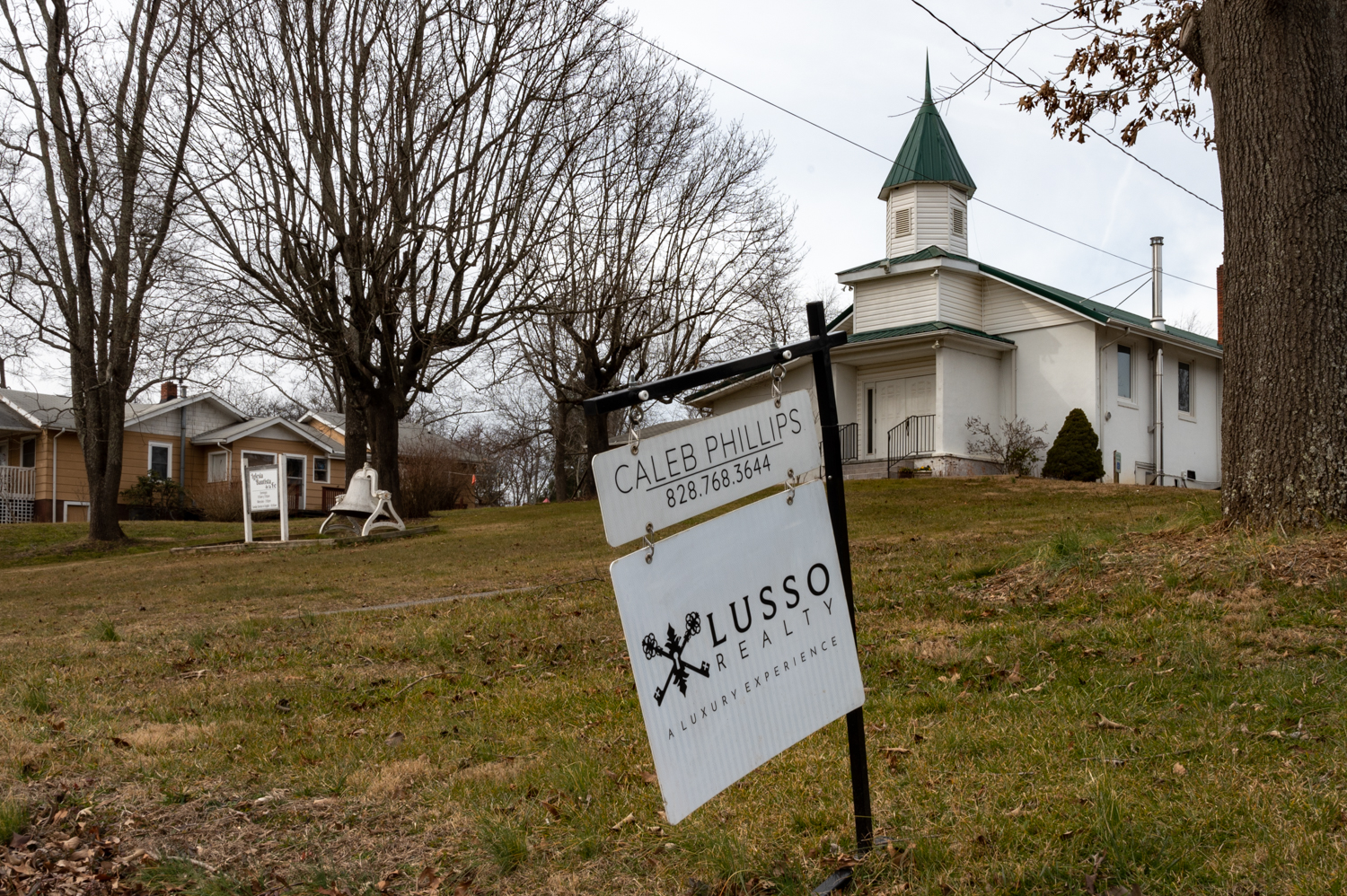
The Bikepath Forward
Conversations about racial and economic inequality are reverberating throughout society, including within the design community. To address inequity head-on, design centers must shift their focus from the built environment to the communities that reside within it.
Often, we find ourselves attempting to fix the problems brought on by social injustice, rather than addressing inequity at its source. In some respects, we need to return to some of the more radical approaches of the early proponents of community design and challenge the institutions and funders that have encouraged so many of us to operate simply as facilitators within the development process — a process that is inherently stacked in favor of the powerful. To get back to our roots, design centers will need to shift from problem solving to community building.
I’m not proposing throwing out Smart Growth Principles altogether. But for Smart Growth to benefit existing communities, designers and planners must consider more than a community’s structures, roads and public spaces. We must also begin advocating for adequate protections, policies and tools to help stave off gentrification and instead build generational wealth within communities.
For instance, in Washington D.C., city leaders have enacted “right to own” laws that give tenants preference to buy buildings when they’re up for sale. Building owners wanting to sell tenant-occupied buildings in the district are required by law to inform their tenants and give them the right to buy their building at a market rate. In a study of seven buildings where renters used this law as a tool to stay put after 2000, research showed that an average of half of the units remained occupied by the same tenants.

San Francisco recently passed a similar law providing a right of first refusal to nonprofit housing associations. And in New York, we can find examples of how credit unions and other community development financial institutions can equitably extend credit to support local, minority-owned businesses.
Cities have had success creating incentives for anchor institutions like hospitals, universities and other place-based institutions to use local procurement and hiring practices to keep jobs and wealth in communities. And we can point to many examples of communities that have found ways to encourage economic inclusion, like establishing limited-equity housing programs where tenants can rent-to-own.
Here in Buncombe County, we welcomed the launch of the county’s first community land trust last year. Community land trusts are nonprofit, community-controlled agencies that buy and lease land, while selling the homes on the land to individuals or families at an affordable price — separating the cost of the land from the cost of housing. ADC recently worked with the Asheville-Buncombe Community Land Trust (ABCLT) to evaluate City-owned parcels in Asheville that would be suitable for small-scale affordable housing (think duplexes and cottage clusters). ABCLT will be looking to secure properties in Buncombe County’s neighborhoods that are most vulnerable to gentrification.
However, such programs are often undercapitalized and added together cannot fix the problem. Gentrification is the symptom; structural inequality is the cause. As community design professionals, we can’t rely on design alone for solutions. We need to embrace political action and advocate in partnerships with low-income people and communities of color for greater economic equality, reparations and closing the wealth gap. This means that design centers need to listen to the community, advocate for funding that can expand the universe of possibilities and lead to truly ambitious projects and policies that address poverty, homelessness, climate change and environmental justice.
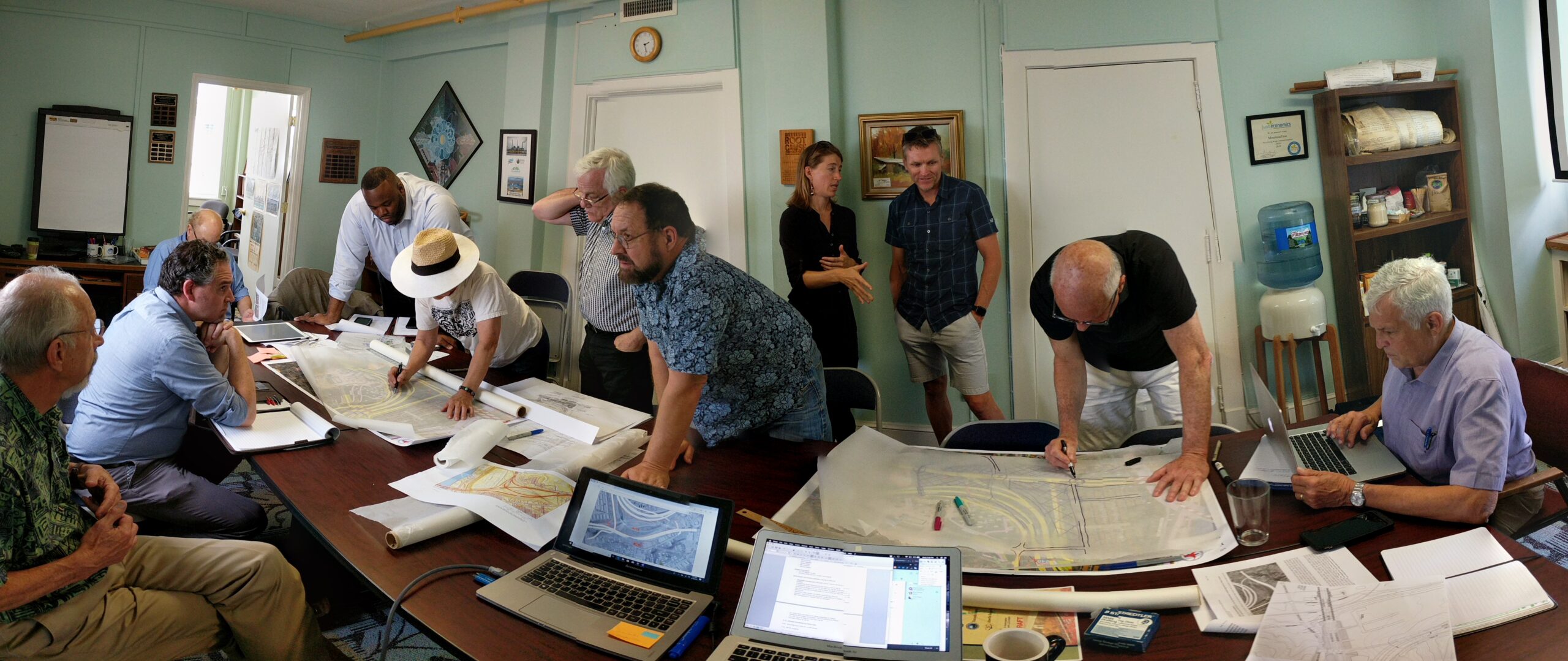
Neighborhoods already have the agency and resourcefulness to assess their most pressing needs. They also have the real-life experiences that best inform solutions that will improve their quality of life. Instead of attempting to solve a community’s problems directly, design centers should support communities with the tools, resources, facilitation and technical expertise needed for them to realize their own vision. Ultimately, by renewing our commitment to community building, design centers can help foster neighborhood self-reliance and self-determination.
ADC’s work with the Emma community will mark a departure from our traditional approach, where we would typically advocate for Smart Growth improvements like sidewalks and greenspace. Instead, we intend to support PODER Emma in developing and implementing new programs and policies that will prevent displacement and stabilize housing for their legacy residents. Once that is accomplished, then we can look to Smart Growth principles to inform improvements to their community in a more responsible and attuned way.
Community design was never meant to be neutral, safe or inoffensive. In its earliest days, it was a direct response to the racism and injustice of redlining, segregation and urban renewal. Our path forward must restore our practice as a movement in solidarity with the poor, the unrepresented and the displaced.
Ed. note: MountainTrue is in the process of defining our Strategic Plan for the next ten years of work. We are also analyzing our work to see where we can do more to address the twin threats of inequity and climate change. To read more about how our organization is working to be more diverse, inclusive and focused on equity, check out mountaintrue.org/equity.
1 Sanoff, Henry “Origins of Community Design” Planners Network, January 2, 2006 https://www.plannersnetwork.org/2006/01/origins-of-community-design/
